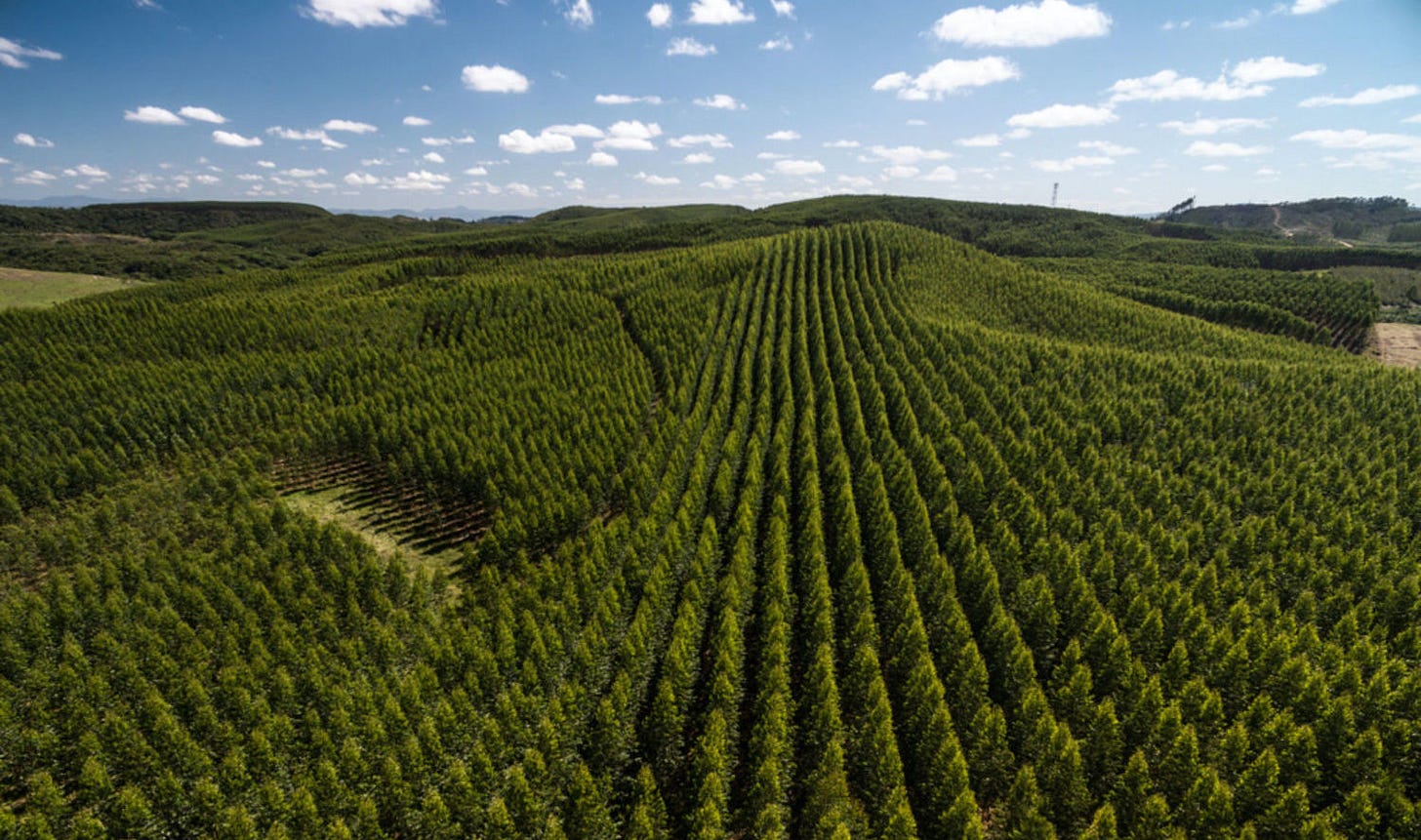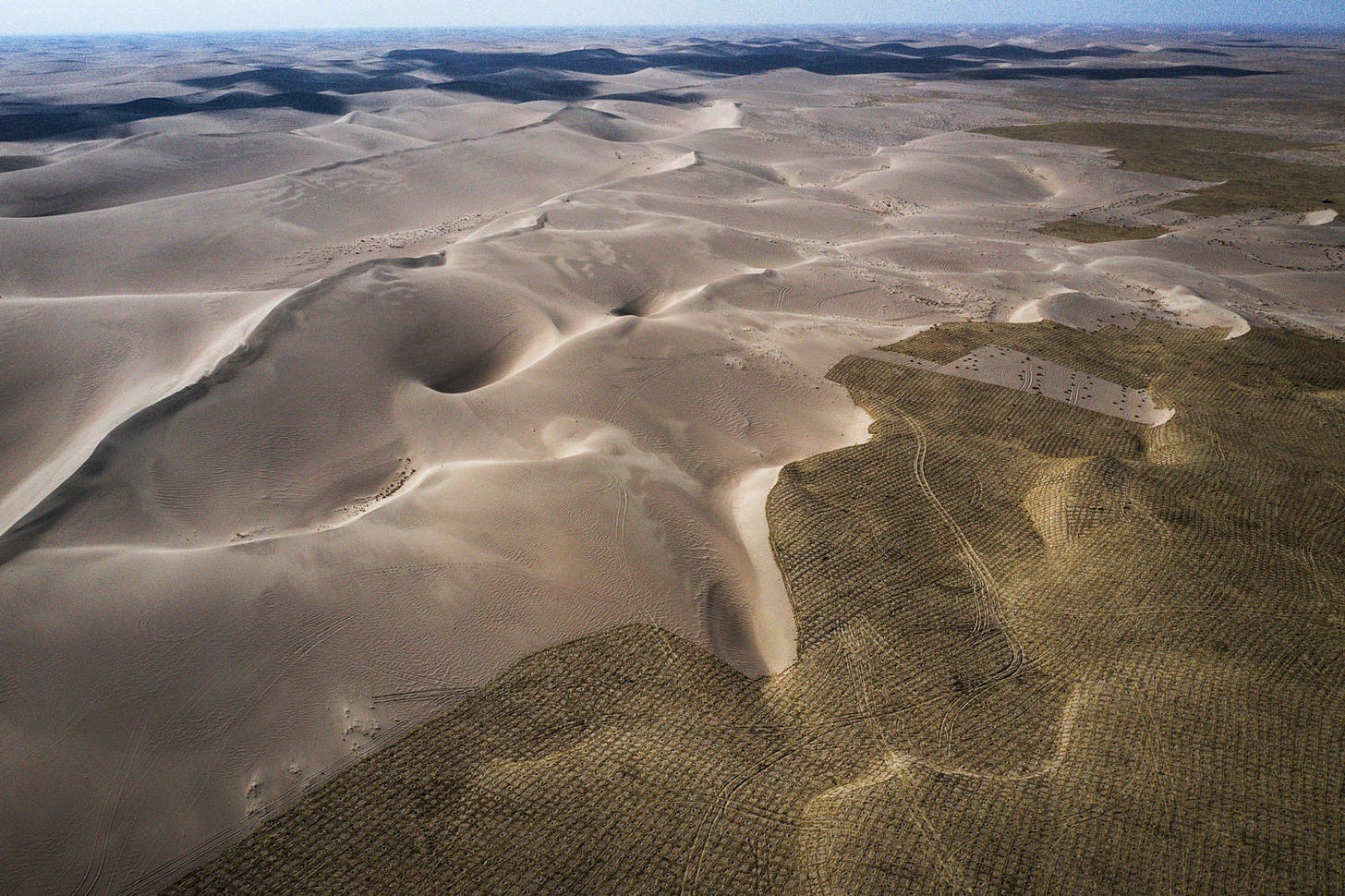🌲 Missing the forest for the trees
Welcome back to The Regeneration Weekly, a newsletter delivering regenerative food and agriculture news to your inbox every Friday. Not a subscriber yet?
Health: Over the past decade, trees have become a global symbol of land restoration and an alleged panacea to our climate crisis under the premise that new forests will conveniently sequester carbon from the atmosphere while halting deforestation. In 2011, the Bonn Challenge was unveiled as a novel plan to plant 150 million hectares of trees across the globe by 2020. Three years later, over 100 nations signed on under the New York Declaration of Forests, increasing the global target to 350 million hectares by 2030. Since then, world leaders and international companies - including Microsoft and JetBlue - have made pledges to offset their greenhouse gas emissions (GHG) by planting millions upon millions of saplings. In 2018, Pakistan expanded its “Billion Tree Tsunami” into a nationwide “10-Billion Tree Tsunami.” Meanwhile, China is on track to plant 87 million acres of trees by 2050 - forming a “Great Green Wall” the size of Germany. And just last year, the World Economic Forum debuted its 1t.org initiative - partnering with private and public stakeholders to “conserve, restore, or grow” one trillion trees by 2030.
It is true that land-use changes, a majority stemming from deforestation, result in roughly 5.2 billion metric tons of carbon dioxide (CO2) annually. And about 33 percent of the world’s land is moderately or highly degraded. Thus, planting trees may seem like a logical, cost-effective way to keep global warming under 2°C while preventing and reversing land degradation. But offsetting emissions through reforestation and afforestation (planting trees in areas that have never been forested) is far from a simple fix. And a growing number of scientists are now highlighting the pitfalls and mixed results of existing reforestation programs. In doing so, they have uncovered how harmful tree planting techniques are regularly conflated with beneficial natural forest restoration. In truth, tree planting initiatives, especially those focused on massive numerical targets, can:
Incentivize industrial forests: Across the globe, 45 percent of promised new forests will be vast monocultures, otherwise known as tree plantations, which rely on non-native species (i.e., acacia, eucalyptus, and pine) that are cheaper to seed but also provide fewer ecological benefits. Man-made forests, primarily planted across countries like Brazil, China, Indonesia, and Nigeria, alter the functioning of entire ecosystems and are more vulnerable to pests (insects and microorganisms) and fire. It is also important to recognize that trees lock carbon in their biomass as they grow. Therefore, almost all the carbon sequestered in an industrial forest, which is harvested about once per decade, is emitted back into the atmosphere as the waste and wood products decompose.
Exacerbate climate change: As counterintuitive as it sounds, indiscriminate increases in forest cover can make global warming worse. Afforestation, which often necessitates clearing land, can release existing carbon stores in the soil, resulting in a net loss of carbon from an ecosystem. The introduction of foreign saplings also crowds out native species and increases the fuel available to wildfires, which re-releases CO2 back into the air. And replacing surfaces like grasslands or deserts with dark-colored tree plantations can absorb more of the sun’s energy, thereby warming the local climate's surface temperature.
Disrupt natural ecosystems: In developing countries, there is often a conflict between using millions of acres of traditional rangelands to plant trees that offset the developed world’s emissions and using them for agriculture to feed growing populations. In South Africa, grazing lands are being replaced by these thirsty invasive species, which offer little biodiversity benefits, consume more water than native plants, and dry up rivers and wetlands; on Hainan Island (China), afforestation programs are substituting biodiverse farming systems with monocultures of eucalyptus and rubber; and in the hills of the Yucatan peninsula (Mexico), farmers are clearing tens of thousands of hectares of jungle land to make room for tree plantations.
In short, reforestation and afforestation have become false symbols of land restoration with negative impacts on the planet's ecosystems and rural communities. If environmental stewards are interested in using trees to combat climate change, they should focus on “proforestation,” which prioritizes the conservation of existing natural forests over indiscriminately planting new ones. By allowing mature forests and degraded lands to regenerate naturally into jungle or woodlands, we can store 40 times more carbon than a tree plantation while leaving precious rangelands and conservation areas alone. Otherwise, we risk a situation where we “miss the savanna for the trees” and lose our ancient grassy ecosystems forever.
Watch: Set amidst the stunning Shenandoah Valley in northern Virginia, Polyface Farm uses no chemicals and feeds over 6,000 families and many restaurants and food outlets within a 3-hour ‘foodshed’ of their farm. ‘Polyfaces’ is a film about connecting to the land and the community. Produced over 4 years it follows Joel Salatin, a 4th generation farmer as he produces nutrient-dense food in a way that works in partnership with nature. The documentary demonstrates how regenerative farming can improve landscapes, local economies, human health, and degraded soils. Along the way, we meet various characters and follow their personal journeys as they benefit physically and emotionally from the Salatin family’s novel form of agriculture.
Shop: Runamok produces organic barrel-aged, infused, smoked, and traditional maple syrup, as well as a line of organic maple-based cocktail mixers and bitters. Seeing themselves as stewards of the land (and the planet), the Vermont-based company does its best to think globally with every decision they make. The solar panels on their facility’s rooftop help reduce their carbon footprint, the organic sugarbush they manage makes for excellent homes for migratory birds, as well as indigenous wildlife, and every single tree in their sugarbush acts as the lungs for the biosphere, taking in excess carbon and breathing out oxygen. Runamok takes pride in working with a landscape that provides not only one of the finest ingredients from North America but also a natural air filter that is tipping the carbon ratio in the right direction. And for a limited time only, our readers can use the code “Regeneration10” at checkout to receive 10 percent off their next purchase.
Disclaimer: The Regeneration Weekly receives no compensation or kickbacks for brand features - we are simply showcasing great new regenerative products.
The Regeneration is brought to you by Wholesome Meats | Soilworks | PastureMap.





